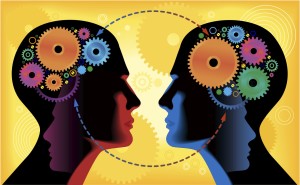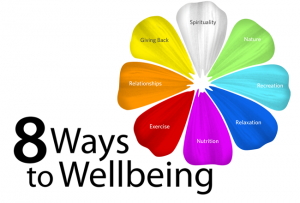In this episode of the Integral Health Resources Podcast, I think out loud about the question “What am I doing here?” before rambling on about everything under the sun.
Brant Cortright on the role of neurogenesis in holistic health
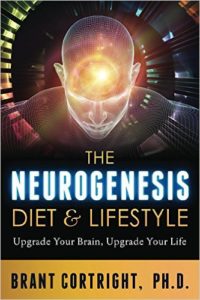 I took a counseling class (Transpersonal Psychotherapy) with Dr. Brant Cortright while I was working on my first master’s degree at the California Institute of Integral Studies, way back in 1995. I liked him a lot. He had a gentle, genuine vibe about him. I can’t remember how it came to be that Dr. Cortright reappeared on my radar, but somehow I got wind that his recent work has to do with “neurogenesis” and its importance to holistic health.
I took a counseling class (Transpersonal Psychotherapy) with Dr. Brant Cortright while I was working on my first master’s degree at the California Institute of Integral Studies, way back in 1995. I liked him a lot. He had a gentle, genuine vibe about him. I can’t remember how it came to be that Dr. Cortright reappeared on my radar, but somehow I got wind that his recent work has to do with “neurogenesis” and its importance to holistic health.
Neurogenesis refers to the growth of new brain cells throughout life. According to Dr. Cortright, it was only recently discovered that neurogenesis happens beyond our 20s, and supposedly there is now sufficient research to support the notion that one’s rate of neurogenesis may be the most important biomarker for brain health. Furthermore, according to Cortright, a healthy brain will translate to optimal health at all levels: body, mind, heart, spirit. Low rates of neurogenesis are supposedly associated with a host of negative outcomes (e.g., depression, stress, anxiety, memory problems, cognitive impairments, impaired immunity), while high rates are associated with such things as robust health, cognitive advantages, enhanced memory and learning, protection from stress and depression, and high immunity. Many things that we do in life, so the story goes, unknowingly slow down our rate of neurogenesis, but we can increase our rate of neurogenesis through various dietary and lifestyle changes. Basically, we want to reduce, minimize, and eliminate the things that lower our rate of neurogenesis (and diminish brain health), and maximize and do more of those things that increase our rate of neurogenesis (and support brain health).
Some of things that Cortright recommends to support neurogenesis and brain health include the following:
Aerobic exercise Mindfulness meditation Diet (omega 3 fatty acids, blueberries, tumeric, green tea) Good sleep Minimize exposure to neurotoxic environments, stress, etc.
Much of what he’s putting forth with this “neurogenesis” spiel is consistent with my own integral health perspective, and I appreciate how he grounds the many dimensions of holistic health by focusing on how each affects brain health. Many of his recommendations are no-brainers (pardon the pun) from my perspective. Who would argue, for instance, against the health benefits of exercise, good sleep, reduced stress, and a healthy diet?
The specifics about diet can be questioned, however. Having not reviewed “the research,” I’m not prepared to rebut Cortright’s specific recommendations. I can only say that I’ve heard other “experts” contradict many of the specific dietary recommendations he makes, and at this point I’ve almost given up on making sense of all the conflicting information out there on this subject. We all tend to inflate the importance of whatever studies support our pet theories, and to discount or diminish those that present a contradiction. Those of us who are left dizzy by the ever-shifting sands of nutrition science often end up, for lack of a more clear path forward, giving too much weight to our own anecdotal experience. For instance, I have a hard time believing all the “sugar is toxic” hype, in light of the fact that the first two-and-a-half decades of my life were spent eating (and thoroughly enjoying) a ridiculously large amount sugary foods. The quality of my life–in every way and on every level–was very, very high during those young, sugar-fueled years. And yet, I’m supposed to believe I was ingesting high quantities of poison everyday, with no noticeable negative effects?
So, my concern here–again, keeping in mind that I have not waded through all the contradictory research first hand–is that Cortright might be too eager to accept whatever research, perhaps scant and preliminary, that supports his thesis. Neuroscience, in general, seems to be way over-hyped these days, and something about the way Cortright’s book is marketed (e.g., “Unleash your brain’s potential!”) has my internal “hype meter” bouncing around all over the place. But again, I realize that this is a pretty weak criticism, given that I have not read the book. I did, however, watch/listen to these public talks and interviews:
I definitely find Cortright’s ideas on this topic interesting, and I will continue to explore the connections between diet, lifestyle, and brain health. Maybe I’ll even read the guy’s book, so I can comment intelligently on the subject!
IHR Podcast #16: Critical Thinking
In this episode of the Integral Health Resources Podcast, I string together some loosely formed thoughts about the centrality of critical thinking in all walks of life.
Related media:
Critical Thinker Academy: Good website with lots of free resources about critical thinking
Meet the new boss, same as the old boss: The NIMH rejects DSM categories, but continues to give short shrift to psychosocial perspectives
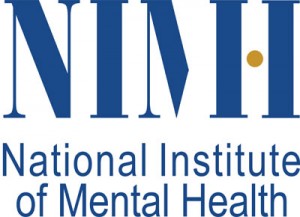 The National Institute of Mental Health will reportedly discourage the use of DSM categories for its future research projects. NIMH Director Thomas Insel is promoting a new approach, the Research Domain Criteria (RDoC), which is based on three guiding principles: 1) Pathology is conceived in terms of dimensions ranging from normal to abnormal; 2) Classification of disorders will be generated from basic behavioral neuroscience, not current DSM categories; 3) Multiple units of analysis (i.e. physiological activity, behavior, self-reports of symptoms) will be used in defining constructs for study. In a recent article by Maia Szalavitz, Insel is quoted as saying:
The National Institute of Mental Health will reportedly discourage the use of DSM categories for its future research projects. NIMH Director Thomas Insel is promoting a new approach, the Research Domain Criteria (RDoC), which is based on three guiding principles: 1) Pathology is conceived in terms of dimensions ranging from normal to abnormal; 2) Classification of disorders will be generated from basic behavioral neuroscience, not current DSM categories; 3) Multiple units of analysis (i.e. physiological activity, behavior, self-reports of symptoms) will be used in defining constructs for study. In a recent article by Maia Szalavitz, Insel is quoted as saying:
I look at the data and I’m concerned. I don’t see a reduction in the rate of suicide or prevalence or mental illness or any measure of morbidity. I see it in other areas of medicine and I don’t see it for mental illness.
As I understand it, the basic idea behind RDoC is that researchers will likely be more successful in understanding the neurological and genetic underpinnings of psychiatric disorders if they focus on specific symptoms, which may occur across multiple disorders, rather than continue to focus on disease categories based on complex groupings of various symptoms. This makes sense to me as a better way to approach the biological dimensions of mental health, but it also implies that the NIMH, like the American Psychiatric Association, is content to downplay the subjective, interpersonal, and sociocultural dimensions of mental health and distress, at least when it comes to research funding. As Benjamin Wachs puts it:
The NIMH isn’t offering a real alternative to the DSM: rather, they’re doubling down on the fallacy that the DSM was pursuing in the first place. That the mind is best understood as a computer, and when your computer breaks you don’t talk to it or ask it how it feels. In fact, you don’t even let the computer decide whether it’s broken or not. If it’s not behaving according to spec, you get it fixed.
DSM-IV Chair Allen Frances said the following his recent analysis of the topic:
APA and NIMH are both on the sidelines, doing nothing to help restore humane and effective care for those who most need it. DSM-5 introduces frivolous new diagnosis that will distract attention and resources from the real psychiatric problems currently being neglected. NIMH has turned itself almost exclusively into a high power brain research institute that feels almost no responsibility for how patients are treated or mistreated in the here and now.
There seems to be two major viewpoints in the mental health field these days. The first, typified by highly influential organizations like the APA and NIMH, sees mental health as primarily a matter of brain functioning. Lip service is often paid to “cultural factors,” but the subjective, intersubjective, and sociocultural dimensions of humanity are given short shrift in terms of emphasis and resource allocation. The second major trend in mental health is the integrative or integral view, which insists that every dimension of humanity must be fully taken into account in all mental health theory, research and practice. The NIMH’s new research direction will hopefully bear fruit, but it will miss the big picture if the narrow focus on neuroscience is not placed within a broader biopsychosocial context.
Therapeutic Lifestyle Changes
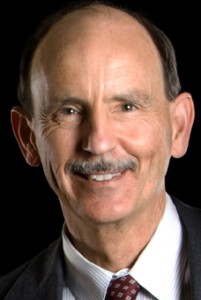 Dr. Roger Walsh recently wrote a landmark article in the American Psychological Association’s flagship journal, American Psychologist. The article, Lifestyle and Mental Health, outlines eight major lifestyle factors that are woefully under-appreciated in the field of mental health, despite overwhelming evidence of their psychological (and physical and social) benefits.
Dr. Roger Walsh recently wrote a landmark article in the American Psychological Association’s flagship journal, American Psychologist. The article, Lifestyle and Mental Health, outlines eight major lifestyle factors that are woefully under-appreciated in the field of mental health, despite overwhelming evidence of their psychological (and physical and social) benefits.
Here’s the abstract:
Mental health professionals have significantly underestimated the importance of lifestyle factors (a) as contributors to and treatments for multiple psychopathologies, (b) for fostering individual and social well-being, and (c) for preserving and optimizing cognitive function. Consequently, therapeutic lifestyle changes (TLCs) are underutilized despite considerable evidence of their effectiveness in both clinical and normal populations. TLCs are sometimes as effective as either psychotherapy or pharmacotherapy and can offer significant therapeutic advantages. Important TLCs include exercise, nutrition and diet, time in nature, relationships, recreation, relaxation and stress management, religious or spiritual involvement, and service to others. This article reviews research on their effects and effectiveness; the principles, advantages, and challenges involved in implementing them; and the forces (economic, institutional, and professional) hindering their use. Where possible, therapeutic recommendations are distilled into easily communicable principles, because such ease of communication strongly influences whether therapists recommend and patients adopt interventions. Finally, the article explores the many implications of contemporary lifestyles and TLCs for individuals, society, and health professionals. In the 21st century, therapeutic lifestyles may need to be a central focus of mental, medical, and public health.
In my opinion, Walsh’s article has the potential to influence and unify the fields of mental health, public health, and medicine in much the same way as Dr. George Engel’s biopsychosocial challenge for biomedicine did back in 1977. The following is a list of resources related to Walsh’s article:
PDF of the article in American Psychologist
Lifestyle and Mental Health topic page on Dr. Walsh’s website
Dialogue between Roger Walsh and philosopher Ken Wilber (Part one)
Dialogue between Roger Walsh and Ken Wilber (Part two)
Full video presentation at University of California, Irvine
UC Irvine presentation in ten parts via YouTube:
(1) Impact of Lifestyle on Mental Health
(2) Exercise Benefits Body, Brain and Mind
(3) Eating for Mental Health: What Kind of Diet Is Best for Brain and Mind?
(4) Fish Oil and Vitamin D: Supplements That Benefit Body, Brain and Mind
(5) The Effects of Nature and Technology on Mental Health
(6) Relationships: The Most Powerful Factor Affecting Wellbeing
(7) Recreation and Mental Health: Good Times Make for Good Minds
(8) Relaxation and Stress Management:The Benefits of Letting Go and Letting Be
(9) Religion, Spirituality, and Mental Health
(10) Helper’s High—Feeling Good by Doing Good
There is also a documentary multimedia project in development, 8 Ways to Wellbeing, that will feature Walsh’s work on TLCs. Here’s the promotional video:
Embodiment of social context – “Sites of Shaping”
Here’s another wonderful and fascinating presentation from Staci Haines of the Strozzi Institute. (Thanks to Mark Walsh for the heads-up.)
[From StrozziInstitute]We are always living inside of a social context. We embody our social contexts, just as we are shaped by and embody our family contexts, communities and the land/environments that influence us. When we are looking at transformation, social context is one of the most influential forces, whether we are focused on personal, community or systemic change.
For another great presentation by Staci Haines (on Somatic Transformation), see this video.
Integral seeds found in my Human Development textbook
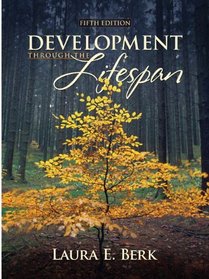 I took a course this summer in Human Development as part of my graduate program in counseling. I had taken a similar course as an undergraduate, back in 1990, and I was pleasantly surprised by how much more integral/holistic the field has become in the last twenty years, at least as put forth by Dr. Laura Berk in her Development Through the Lifespan book. Berk summarizes the lifespan perspective on development as follows:
I took a course this summer in Human Development as part of my graduate program in counseling. I had taken a similar course as an undergraduate, back in 1990, and I was pleasantly surprised by how much more integral/holistic the field has become in the last twenty years, at least as put forth by Dr. Laura Berk in her Development Through the Lifespan book. Berk summarizes the lifespan perspective on development as follows:
…a balanced view that envisions development as a dynamic system. It is based on assumptions that development is lifelong, multidimensional (affected by biological, psychological, and social forces), multidirectional (an expression of both growth and decline), and plastic (open to change through new experiences). (p.41)
Sounds pretty integral-ish to me!
Dr. Berk continually reminds the reader of the complex, biopsychosocial nature of development, which challenges any simplistic conclusions we might draw based on any single factor, like heredity, for instance. An example of this is the study (Caspi et al, 2002) referenced where boys, even when they had a gene known to predispose people toward aggression, did not in fact show abnormal levels of aggression as long as they were raised in an family environment free from abuse.
I was struck by the degree to which psychological and social factors were shown to influence human development, even at the prenatal stage of life. Considering the number of factors— environmental, relational, political, etc.— that can impact the emotional stress of pregnant women, it is mind-blowing to contemplate the number of things that can indirectly put babies at risk for a wide range of potential problems. One study (Yehuda et al., 2005) showed how the events of 9/11 indirectly affected cortisol levels in infants’ saliva (which can impact the developing child’s susceptibility to a wide range of developmental problems later in life) by causing extreme anxiety in some mothers who happened to be pregnant during the terrorist attacks. So, even something as seemingly remote as our political relations with other countries can have an impact (indirectly) on the physiological development of our children. This understanding is, of course, consistent with the models of integral health presented here on this site.
While I was heartened by the general trend toward a more comprehensive, biopsychosocial approach to the modern study of human development, I was troubled that healthy development in adulthood is still for the most part described as if it’s a matter of conforming to conventional roles and social norms, while poor adjustment is linked to being out-of-step with societal expectations. At one point in the book, an adult’s inability or refusal to conform to society’s age-graded expectations (the “social clock” marking life events like first job, marriage, having kids, etc.) is linked not only to increased psychological stress, but also to undermining the stability of society:
…the stability of society depends on having people committed to social-clock patterns” (p.471)
This, of course, gets to the deeper questions, such as What does it really mean to be an adult?, that are still largely ignored in mainstream academic inquiry. Personally, I’ve never defined my adult status and development in terms of education, career goals, jobs, intimate relationships, parenthood, home-ownership, or even age. Rather, I conceive of maturity and personal growth as a process of continually getting deeper in terms of 1) my self-awareness/self-knowledge, and 2) my capacity for love and compassion. That said, it’s still good to see the mainstream study of human development embracing a more holistic approach in recent years.
Dr. Mike Evans and his “favourite medicine”
I’ve recently added My Favourite Medicine to my list of integral health web resources. The site is an effort by Dr. Mike Evans to “curate the best health information found online.” He has produced a couple of excellent whiteboard-style animated health education videos. The first video below (“23 and 1/2 Hours”) addresses the question: “What is the single best thing we can do for our health?”
Dr. Evans recently released a follow-up video that focuses on “The single most important thing you can do for your stress.”
If you appreciate these videos, you might also enjoy this brief, three-part series called “Stress Explained by Dr. Mike.”
Enjoy!
Addictionally irrational
Go to the National Institute on Drug Abuse (NIDA) website right now and you’ll see brains. Pictures, graphics, scans — a colorful display. You’ll also see a photo of Nora Volkow, NIDA’s director, whose “work has been instrumental in demonstrating that drug addiction is a disease of the human brain.” This would be all well and good, if pictures (or any other representation or analysis) of what’s going on in a drug user’s brain actually demonstrated that addiction is a brain disease. But they don’t. How it is that “we have come to believe” this irrational notion, that it has become the accepted truth among both lay people and professional orthodoxy, is simply mind-boggling to me.
As Stanton Peele has pointed out again and again, including today on his Psychology Today blog, the brain disease model of addiction defies both common sense and a reasonable interpretation of scientific research:
The chronic brain disease model doesn’t explain the most fundamental things about addiction, like how the vast majority of people overcome it without treatment, that there are no measurable biological means to determine whether and when people are addicted and when they are not, nor is there any treatment that addresses the supposed dopamine-based nature of addiction. In fact, the best science and therapy both point towards an entirely opposite, real-world way of defining “recovery.”
Meanwhile, as the idea of addiction as a brain disease is imbedded in our culture, we simply get more and more examples of brain diseases as more and more things are understood as addictions, and as we spread the idea further and thinner than any possibly scientific explanation can be spread.
This idea is not an expression of science. It is, instead, a cultural myth, one that the best and the brightest are obligated to endorse to be recognized as mainstream thinkers.
Don’t get me wrong — I’m all for learning as much as possible about the physiological and neurological aspects of addiction, and of all other realms of human experience for that matter. Of course brains (our organism/physiology in general) are absolutely foundational to all that we experience. A baseball bat to the head is all the evidence needed to establish that fact. But how, pray tell, does the plainly evident and obvious fact that all human experience is grounded and reflected in wonderfully complex and interesting ways in the brain and body lead to the notion that so many of our life problems are therefore fundamentally diseases of the brain? Imagine Nora Volkow’s perfect scenario, that after years of research we have finally and perfectly mapped all the changes that happen in the brain over the complete course of drug use and addiction. Imagine that brain scan technology could yield perfect scans and that we understood and interpreted the images perfectly. To my mind that still wouldn’t lend a shred of evidence to the notion that addiction is a brain disease.
A quick thought experiment: You are hooked up to this hypothetical machine (a super scanner) which can perfectly record all changes in your body’s and brain’s physiology, demonstrating with perfect accuracy every deviation from healthy homeostasis. You are put in room. In through the door on the far end walks a tiger. Your body and brain begin to go haywire. Hormones and neurotransmitters are sloshing around and completely transform your state of existence from one of total health and relaxation to one of total stress. The super scanner perfectly records every change and quickly prints out a recipe for a drug that will re-balance your system, with minimal side effects. While your state of stress and imbalance is clearly and dramatically grounded and reflected in your physiology, isn’t it a bit shortsighted to think of your problem solely or even primarily in those terms? If someone were to drop a cage on the tiger, your physiology would quickly and naturally move back to homeostasis without any need for a drug or any other physiological intervention. Your problem was primarily the presence of the tiger, not the changes in your brain that the presence of the tiger inspired. The solution–i.e. the appropriate intervention–to the problem was primarily social and behavioral, not physiological. In fact, the information provided by the super scanner, interesting as it might be, was completely irrelevant in terms of the practical solution to the problem.
Drug use and abuse changes what’s going on in the brain. Yes. Everything we do and everything that happens to us changes what goes on in the brain. Yes. Therefore, deviations from healthy, homeostatic brain and body states are best thought of as diseases of the brain? Not so fast Dr. Volkow. Studying objective brain changes is one of many perspectives that are worthy of consideration, focus, and scrutiny. Taken together with subjective, relational, behavioral, social, and cultural perspectives, we might yet arrive at a truly comprehensive, rational, integral approach to helping those seeking health and well-being.
Somatic Transformation
Mark Walsh of Integration Training tipped me off to this wonderfully lucid explanation of somatic transformation by Staci Haines of the Strozzi Institute. Haines describes three components of somatic transformation:
Somatic awareness: What are you noticing in your sensations and what do you feel in your body? Developing this awareness allows us to make contact with a store of information and intelligence that we normally have limited access to.
Somatic practices: We are what we practice. We become what we practice. And we’re always practicing. But is what you’re practicing aligned with who you want to be? Somatic practices train our nervous systems as well as provide opportunities for exploring meaning and developing insight. Our entire psychobiology is explored and developed as a form of intelligence.
Somatic opening: Being able to transform from one embodied shape to another that is more congruent and aligned with the things that you most care about. Shape is meant to imply that which is embodied in someone (i.e. people’s history and lived experience; their emotions and emotional range; their thinking and belief systems; the actions people take and don’t take). Learning and change involve a transformation of one’s entire shape. We can shift from a shape that has less choice, freedom and flexibility to one that’s more aligned with our deepest intentions and possibilities.
Embodiment is what makes the change sustainable, Haines explains, as it is that which is most deeply practiced and embodied in us is that will come forward in our daily lives. Thinking will only take us so far. The process of somatic transformation is one in which we deconstruct old patterns and then reshape our selves and our lives through somatic practices, always mindful of the social contexts which are embodied in each of us.
After listening to this fine discussion of somatic transformation, I just happened to stumble across these amazing videos of 86-year-old Johanna Quaas doing gymnastics at the 2012 Cottbus World Cup this past weekend. “I’ll have what she’s having!”



